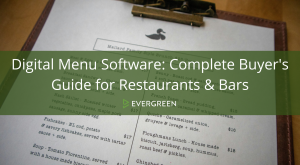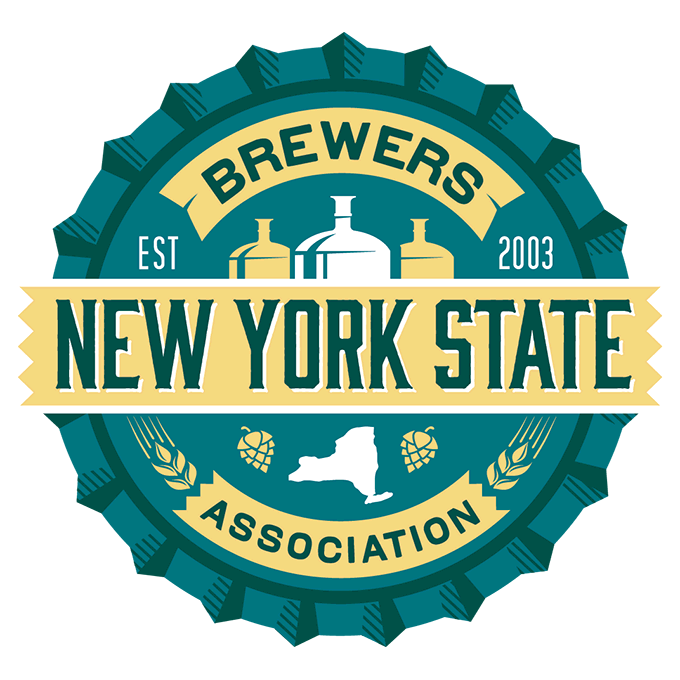The craft beer industry has exploded with over 9,500 breweries operating in the United States alone, creating intense competition for customer attention and loyalty. Smart breweries and taprooms are leveraging digital beer menu boards to educate customers, showcase their expertise, and drive significant revenue growth.
This comprehensive guide explores how digital beer menu boards can transform your brewery’s customer experience while boosting profits by an average of 42% – with some establishments seeing increases exceeding 65%.
The Craft Beer Revolution Meets Digital Innovation
Industry Growth and Competition Statistics
The craft beer market presents both opportunities and challenges:
9,547 active breweries in the U.S. (up 23% from 2020)
$116.8 billion total beer market with craft representing 25.2% market share
73% of beer drinkers try new craft beers regularly
Average customer visits 3.2 different breweries per month
68% of craft beer purchases are influenced by on-premise discovery
The Customer Education Challenge
Modern craft beer consumers face decision paralysis with extensive tap lists and complex beer descriptions. Digital beer menu boards solve this challenge by providing:
Comprehensive Beer Information:
Style descriptions with flavor profiles and brewing techniques
IBU (International Bitterness Units) and ABV percentages with visual scales
Hop varieties and malt bills with educational content
Seasonal availability and limited edition notifications
Brewery story and brewer notes with personal touches
Customer Journey Enhancement:
Progressive disclosure preventing information overload
Personalized recommendations based on preferences and history
Educational content building beer knowledge and appreciation
Social proof through ratings, reviews, and popular selections
Interactive elements encouraging exploration and discovery
Understanding Your Tap Room Customer Types
The Beer Tourist (25% of customers)
Characteristics:
Visiting from out of town or trying brewery for first time
Limited knowledge of your specific beers and brewery story
High willingness to spend on unique experiences and exclusive items
Strong desire for education and behind-the-scenes information
Likely to purchase merchandise and take beer home
Digital Menu Optimization:
Prominent brewery story and history with founder information
“Must-try” sections featuring signature and award-winning beers
Flight recommendations for comprehensive tasting experiences
Merchandise integration with branded glassware and apparel
Social media integration encouraging check-ins and photo sharing
The Craft Beer Enthusiast (35% of customers)
Characteristics:
Extensive craft beer knowledge with strong preferences and opinions
Seeks unique, rare, or limited edition offerings
Appreciates technical brewing information and detailed specifications
Willing to pay premium prices for exceptional quality and exclusivity
Influences other customers through recommendations and social media
Digital Menu Optimization:
Detailed technical specifications with brewing process information
Limited edition and barrel-aged selections prominently featured
Brewer’s notes with technical details and inspiration stories
Comparative analysis with similar styles and previous batches
Advanced search and filtering options for specific preferences
The Social Drinker (30% of customers)
Characteristics:
Prioritizes atmosphere and social experience over beer technicalities
Prefers approachable, easy-drinking beer styles
Values group experiences and sharing opportunities
Influenced by friend recommendations and popular selections
Moderate spending with focus on food and atmosphere
Digital Menu Optimization:
“Easy-drinking” and “crowd-pleaser” category highlighting
Food pairing suggestions with detailed flavor complementing
Group size options and sharing opportunities with flight bundles
Social proof elements showing popular selections and customer photos
Simple descriptions focusing on taste and experience rather than technical details
The Local Regular (10% of customers)
Characteristics:
Frequent visitors with established preferences and relationships
Deep knowledge of brewery’s offerings and seasonal rotations
High lifetime value with consistent spending patterns
Strong brand loyalty and word-of-mouth advocacy
Interested in new releases and exclusive early access
Digital Menu Optimization:
Personalized greetings and loyalty program integration
“New since your last visit” sections with recent additions
Early access notifications for limited releases and special events
Customized recommendations based on previous purchase history
VIP recognition with exclusive content and behind-the-scenes access
Comprehensive Beer Information Architecture
Essential Beer Data Display
Primary Information (Always Visible):
Beer name with clear, readable typography
Style designation with popular name recognition
ABV percentage with visual representation
IBU rating with bitterness scale indicator
Price per pour size with clear value proposition
Secondary Information (Expandable/Detailed View):
Detailed style description with taste profile
Hop varieties with flavor contribution notes
Malt bill with color and body impact
Yeast strain with flavor and aroma influence
Serving temperature recommendations
Tertiary Information (Expert/Enthusiast Level):
Original and final gravity measurements
Fermentation timeline and process details
Aging process and barrel information (if applicable)
Awards and recognition with competition details
Production notes and brewer’s commentary
Visual Information Hierarchy
Scanning Pattern Optimization:
F-pattern layout accommodating natural eye movement
Visual weight distribution emphasizing high-margin selections
Color coding system for beer styles and categories
Icon systems for quick identification of characteristics
White space utilization preventing cognitive overload
Typography and Readability:
Minimum 18px font size for viewing distance optimization
High contrast ratios ensuring readability in various lighting
Sans-serif fonts for digital display clarity
Hierarchical typography with clear information levels
Consistent spacing and alignment for professional appearance
Dynamic Content and Real-Time Updates
Inventory Integration Systems
Keg Level Monitoring:
Real-time keg capacity tracking with automated updates
“Running low” indicators creating urgency and scarcity
Automatic removal of out-of-stock items from display
Predictive analytics for keg replacement scheduling
Staff notifications for proactive inventory management
Production Schedule Integration:
New beer announcements with release date countdowns
Seasonal rotation schedules with advance promotion
Limited batch notifications with quantity available
Brewing process updates with “coming soon” teasers
Quality control status with “conditioning” or “ready” indicators
Time-Based Content Scheduling
Daily Rotation Strategy:
Featured beer changes every 2-4 hours during peak times
Slower rotation during off-peak hours for maximum exposure
Weekend vs. weekday content optimization for different crowds
Special event coordination with appropriate beer highlighting
Staff pick rotations showcasing brewery team expertise
Seasonal Adaptation:
Automatic seasonal beer promotion based on calendar dates
Weather-responsive content featuring appropriate styles
Holiday-themed promotions with special packaging and presentation
Anniversary and milestone celebration integration
Local event coordination with community calendar awareness
Educational Content That Drives Sales
Brewing Process Education
Ingredient Education:
Hop variety spotlights with flavor profiles and growing regions
Malt types explanation with flavor contributions and color impact
Yeast strain information with fermentation characteristics
Water profile discussion with local sourcing and treatment
Adjunct ingredients with unique flavor additions and brewing purposes
Process Explanation:
Step-by-step brewing process with visual aids and timing
Fermentation stages with temperature and duration details
Conditioning and aging processes with timeline and quality factors
Quality control measures with testing and standards
Packaging and serving considerations with freshness optimization
Style Education and Exploration
Historical Context:
Beer style origins with geographic and cultural background
Evolution of styles with modern craft interpretations
Traditional vs. innovative approaches with examples and comparisons
Regional variations with local influences and preferences
Cultural significance with social and ceremonial aspects
Flavor Development:
Tasting note vocabulary with descriptor explanations
Aroma identification with common scent associations
Mouthfeel characteristics with texture and body descriptions
Finish and aftertaste with duration and flavor evolution
Temperature impact with serving recommendations and changes
Food Pairing Integration and Upselling
Strategic Pairing Recommendations
Complementary Flavors:
Hop bitterness balancing rich, fatty foods
Malty sweetness enhancing spicy cuisine heat management
Roasted flavors complementing grilled and smoked dishes
Fruity esters highlighting dessert and cheese selections
Carbonation cleansing palate between courses and flavors
Contrasting Approaches:
Light beers with heavy foods for balance and contrast
Dark beers with light dishes for sophisticated pairing
Sweet beers with salty foods for flavor enhancement
Bitter beers with sweet desserts for complexity
Sour beers with rich dishes for acidity and brightness
Menu Engineering Psychology
High-Margin Item Promotion:
Premium beer placement in visual hierarchy golden zones
Limited edition positioning creating exclusivity and urgency
Barrel-aged selections with detailed aging process explanations
Collaborative brews with partner brewery story and mutual promotion
Specialty ingredients highlighting with cost justification and uniqueness
Bundle Creation:
Flight packages encouraging multiple beer exploration
Food and beer pairings with comprehensive experience offerings
Merchandise bundles with branded glassware and apparel
Event packages combining tastings with educational experiences
Take-home options with growlers, cans, and bottles
Technology Integration and POS Connectivity
Point-of-Sale Synchronization
Real-Time Inventory Management:
Automatic menu updates when kegs kick or run low
Pricing synchronization with promotional and happy hour rates
Staff notifications for inventory management and customer communication
Sales tracking with item performance and profitability analysis
Forecasting integration with demand prediction and ordering optimization
Customer Data Integration:
Loyalty program connectivity with points and reward tracking
Purchase history analysis with personalized recommendations
Preference learning with artificial intelligence and machine learning
Social media integration with check-ins and sharing encouragement
Email marketing coordination with targeted promotions and announcements
Advanced Analytics and Insights
Customer Behavior Analysis:
Dwell time measurement with engagement correlation and optimization
Menu section popularity with attention tracking and improvement opportunities
Conversion rates from viewing to purchasing with funnel analysis
Social sharing correlation with beer selection and promotion effectiveness
Return visit patterns with loyalty and satisfaction measurement
Business Performance Metrics:
Revenue per square foot with space utilization optimization
Average order value with upselling effectiveness measurement
Customer acquisition cost with marketing ROI analysis
Profit margin analysis with cost control and pricing strategy
Seasonal trends with inventory planning and promotional timing
Design Principles for Brewery Environments
Aesthetic Integration
Brand Consistency:
Logo placement and sizing standards across all display elements
Color palette adherence with brand guideline compliance
Typography consistency with existing marketing materials
Imagery style with photography and graphic treatment alignment
Voice and tone maintenance with brand personality reflection
Environmental Harmony:
Industrial design integration with brewery equipment and architecture
Lighting consideration with ambient brewery lighting and screen brightness
Scale appropriateness with ceiling height and viewing distance optimization
Material coordination with wood, metal, and glass brewery elements
Acoustic considerations with brewery noise and customer conversation
User Experience Optimization
Information Hierarchy:
Most important information (beer name, style, price) prominently displayed
Secondary details (ABV, IBU) clearly visible but not overwhelming
Tertiary information (detailed descriptions) available on demand
Navigation elements intuitive and accessible for all customer types
Search and filtering capabilities for large beer selections
Accessibility Compliance:
High contrast ratios for visually impaired customers
Text size options for different viewing distances and visual abilities
Screen reader compatibility for assistive technology users
Cognitive accessibility with clear layouts and simple navigation
Physical accessibility with screen placement and interaction design
Seasonal and Limited Release Strategies
Creating Anticipation and Urgency
Pre-Release Marketing:
Coming soon teasers with brewing progress updates
Ingredient spotlights building excitement and education
Brewer interviews with personal stories and inspiration
Social media countdown campaigns with community engagement
VIP preview opportunities for loyalty program members
Launch Day Coordination:
Special events with guided tastings and educational presentations
Limited quantity notifications creating scarcity and urgency
First pour ceremonies with celebration and documentation
Social media integration encouraging immediate sharing and promotion
Merchandise tie-ins with commemorative items and collectibles
Seasonal Rotation Management
Automated Seasonal Transitions:
Calendar-based content updates with appropriate seasonal messaging
Weather-responsive promotions with temperature and condition considerations
Holiday-themed presentations with cultural and celebratory elements
Local event coordination with community calendar integration
Transition planning with advance notice and customer preparation
Inventory Movement Strategies:
End-of-season promotions with attractive pricing and value messaging
Transition tastings comparing outgoing and incoming seasonal selections
Educational content about seasonal ingredients and brewing considerations
Customer education about optimal consumption timing and storage
Staff training on seasonal transitions and customer communication
Staff Training and Customer Service Integration
Digital Menu Navigation Training
Staff Education Programs:
Comprehensive brewery knowledge with beer education and tasting training
Digital system operation with troubleshooting and customer assistance
Customer interaction skills with education and recommendation techniques
Upselling strategies with natural conversation and value proposition
Problem resolution with technical issues and customer concerns
Ongoing Development:
Regular tasting sessions with new releases and seasonal offerings
Beer knowledge testing with certification and recognition programs
Customer service scenarios with role-playing and skill development
Technology updates with new feature training and optimization techniques
Industry education with trends, competitors, and market knowledge
Customer Assistance Protocols
Proactive Engagement:
Greeting protocols acknowledging customer types and experience levels
Recommendation systems based on customer preferences and education level
Educational opportunities with voluntary beer knowledge sharing
Tasting facilitation with proper techniques and glassware usage
Social media encouragement with photo opportunities and hashtag promotion
Problem Resolution:
Technical assistance with digital menu navigation and information access
Beer selection guidance with preference identification and matching
Dietary restriction accommodation with ingredient information and alternatives
Group coordination with multiple customer needs and preferences
Feedback collection with continuous improvement and customer satisfaction
ROI Measurement and Success Metrics
Financial Performance Indicators
Revenue Enhancement:
Average order value increase with digital menu implementation
Upselling success rates with premium and limited selection promotion
Customer spend per visit with comprehensive experience measurement
Repeat customer frequency with loyalty and satisfaction correlation
Merchandise sales integration with beer selection and brand engagement
Cost Optimization:
Menu printing elimination with digital update cost comparison
Staff efficiency improvements with reduced explanation time and increased service capacity
Inventory waste reduction with real-time updates and demand management
Marketing cost reduction with integrated promotional capabilities
Training cost efficiency with self-service customer education
Customer Experience Metrics
Engagement Measurement:
Time spent viewing menus with content optimization opportunities
Information depth accessed with customer education effectiveness
Social media sharing with brand advocacy and promotion
Customer satisfaction scores with service quality and experience ratings
Net Promoter Score with loyalty and recommendation likelihood
Educational Effectiveness:
Beer knowledge improvement with customer learning and appreciation
Exploration encouragement with new style and brewery discovery
Confidence building with ordering decision speed and satisfaction
Appreciation development with return visits and deeper engagement
Community building with customer interaction and brewery loyalty
Future Trends and Emerging Technologies
Artificial Intelligence Integration
Personalized Recommendations:
Machine learning algorithms analyzing customer preferences and history
Predictive analytics suggesting optimal beer selections and experiences
Dynamic content adaptation based on individual customer profiles
Behavioral pattern recognition with proactive service and recommendations
Continuous learning with improved accuracy and customer satisfaction
Automated Content Generation:
AI-powered beer descriptions with consistent quality and brand voice
Dynamic pairing suggestions with food menu integration and optimization
Seasonal content creation with appropriate messaging and promotion
Social media integration with automated posting and engagement
Inventory-driven promotions with optimal pricing and positioning
Augmented Reality Applications
Immersive Beer Education:
3D ingredient visualization with interactive exploration and learning
Brewing process animation with step-by-step education and engagement
Virtual brewery tours with behind-the-scenes access and storytelling
Flavor profile visualization with interactive tasting note exploration
Historical timeline integration with brewery story and milestone celebration
Enhanced Customer Experience:
Virtual beer flights with visual comparison and selection assistance
Food pairing visualization with dish recommendation and presentation
Social sharing enhancement with AR filters and interactive elements
Gamification elements with loyalty program integration and achievement recognition
Community features with customer interaction and brewery engagement
Implementation Roadmap for Breweries
Phase 1: Assessment and Planning (Months 1-2)
Current State Analysis:
Customer behavior observation with traffic patterns and engagement measurement
Staff workflow evaluation with efficiency and training needs assessment
Technology infrastructure audit with compatibility and upgrade requirements
Competitive analysis with market positioning and differentiation opportunities
Financial baseline establishment with current performance and goal setting
Strategic Planning:
Content strategy development with brand alignment and customer focus
Technology selection with budget consideration and future scalability
Staff training program design with comprehensive education and skill development
Marketing integration planning with promotional strategy and community engagement
Success metrics definition with measurement systems and reporting requirements
Phase 2: Technology Implementation (Months 3-4)
Hardware Installation:
Display selection and positioning with optimal viewing and aesthetic integration
Network infrastructure upgrade with bandwidth and reliability requirements
POS system integration with real-time data sharing and synchronization
Content management system setup with user access and permission controls
Testing and quality assurance with comprehensive functionality verification
Software Configuration:
Menu digitization with photography, descriptions, and technical specifications
Brand customization with visual identity and messaging consistency
Integration configuration with inventory, loyalty, and social media systems
Staff training materials with role-specific access and responsibility definition
Customer education resources with adoption encouragement and support systems
Phase 3: Content Creation and Launch (Months 5-6)
Content Development:
Beer portfolio digitization with comprehensive information architecture
Educational content creation with brewing process and ingredient explanations
Seasonal campaign planning with rotation schedule and promotional strategy
Staff training implementation with comprehensive education and skill development
Customer communication planning with launch announcement and adoption encouragement
Soft Launch and Optimization:
Limited deployment with select displays and content for testing and refinement
Customer feedback collection with rapid response and improvement implementation
Staff feedback integration with workflow optimization and training enhancement
Performance monitoring with metric collection and analysis for optimization
Iterative improvement with continuous refinement based on data and feedback
Phase 4: Full Deployment and Scaling (Month 6+)
Complete System Activation:
All displays and features operational with comprehensive content library
Staff fully trained with ongoing support and development programs
Customer adoption campaigns with education and incentive programs
Performance monitoring systems fully operational with regular reporting and analysis
Continuous improvement processes established with regular review and optimization cycles
Conclusion: Transforming the Brewery Experience
Digital beer menu boards represent more than a technological upgrade—they’re a strategic investment in customer education, experience enhancement, and revenue optimization. The breweries that thrive in 2025’s competitive market will be those that leverage these tools to create meaningful connections between customers and craft beer.
Key Success Factors:
Customer-Centric Design: Focus on education and experience over technology showcase
Comprehensive Integration: Connect with POS, inventory, and customer systems for seamless operation
Staff Empowerment: Train team members to become digital experience facilitators and beer educators
Continuous Innovation: Stay current with customer expectations and technology capabilities
Data-Driven Optimization: Use analytics to continuously improve content and customer experience
The Path Forward:
Successful implementation requires:
Strategic planning with clear goals and success metrics
Technology selection aligned with brewery needs and customer expectations
Comprehensive staff training with ongoing education and development
Customer-focused content creation with educational value and engagement
Continuous optimization with data analysis and feedback integration
The craft beer industry’s future belongs to breweries that can effectively combine traditional brewing excellence with modern digital customer experience. Digital beer menu boards provide the platform for this integration, enabling breweries to educate customers, showcase expertise, and build lasting relationships that drive both immediate sales and long-term loyalty.
The investment in digital beer menu boards pays dividends not just in revenue growth, but in building the foundation for sustainable competitive advantage in an increasingly crowded craft beer marketplace.













